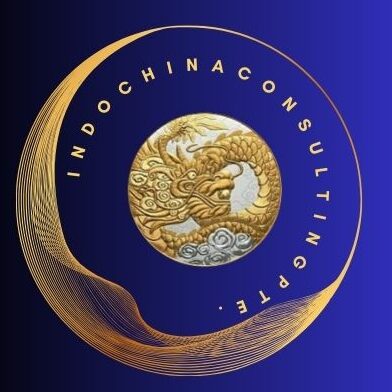Winning and retaining customers hinges on one key factor: exceptional customer experience personalization.
In today’s competitive market, startups and SMEs can no longer rely solely on innovative products or competitive pricing. Personalization has emerged as a cornerstone for driving customer loyalty, increasing revenue, and beating competitors. This comprehensive guide uncovers actionable strategies, real-world examples, and cautionary tales to help you build a winning personalization strategy.
Why Customer Experience Personalization Matters
Customer experience optimization focuses on understanding and catering to individual customer needs and preferences. Thoughtful personalization fosters loyalty and differentiates your brand from competitors relying solely on features or aesthetics.
Key Stats That Prove Its Impact:
- 80% of consumers are likelier to purchase from a brand that offers personalized experiences (Epsilon).
- Companies that excel in personalization generate 40% more revenue than their counterparts (McKinsey).
- Poor customer experience leads to 32% of customers leaving a brand after just one bad experience (PwC).
How to Implement Thoughtful Customer Experience Personalization
1. Understand Your Customers
- Actionable Step: Leverage data analytics tools to segment your audience based on demographics, behavior, and purchase history.
- Tool: Use platforms like Google Analytics or HubSpot for data segmentation.
Example: Spotify’s personalized playlists, like Discover Weekly, use listening history to create a tailored user experience, solidifying its position as a market leader.
2. Map the Customer Journey
- Actionable Step: Identify pain points and opportunities at each stage of the customer journey. Optimize touchpoints with personalized messages or services.
- Resource: Use tools like Customer Journey Mapping by Miro to visualize touchpoints.
Example: Airbnb uses data to offer tailored recommendations, such as suggesting experiences or stays based on past bookings, enhancing the user journey.
3. Utilize AI and Machine Learning
- Actionable Step: Invest in AI-driven platforms to deliver real-time personalized experiences.
- Resource: Explore AI solutions like Salesforce Einstein or Dynamic Yield for scalable personalization.
Example: Amazon’s recommendation engine accounts for 35% of its revenue by suggesting products based on past purchases and browsing behavior.
4. Train Your Team to Personalize Human Interactions
- Actionable Step: Empower customer-facing employees with insights to provide tailored solutions.
- Tool: Implement CRM systems like Zoho CRM to centralize customer data.
Example: Ritz-Carlton hotels empower employees to record guest preferences and deliver unique experiences, earning unmatched customer loyalty.
5. Monitor and Iterate
- Actionable Step: Continuously collect feedback and analyze data to refine your personalization efforts.
- Tool: Use Net Promoter Score (NPS) surveys to gauge customer satisfaction.
Example: Netflix constantly iterates its recommendation algorithms, ensuring a highly engaging user experience.
Success Stories: Winning with Customer Experience Personalization
1. Stitch Fix
- Strategy: Leveraged AI and human stylists to curate personalized fashion boxes.
- Outcome: Retained over 3.5 million active clients by delivering tailored clothing recommendations.
2. Warby Parker
- Strategy: Combined AR technology with home try-on kits to personalize the eyewear shopping experience.
- Outcome: Captured significant market share in the competitive eyewear industry.
3. Peloton
- Strategy: Used data to recommend personalized workout routines and classes.
- Outcome: Created a loyal community of fitness enthusiasts, differentiating itself from traditional gym equipment brands.
Brands That Missed the Mark
1. Blackberry
- Failure: Focused on hardware features rather than user experience.
- Outcome: Lost market dominance to Apple and Android devices that prioritized customer-centric design.
2. MySpace
- Failure: Overlooked personalization and user experience improvements.
- Outcome: Lost users to Facebook, which offered a cleaner, more engaging interface tailored to user behavior.
3. J.C. Penney
- Failure: Moved away from customer preferences by eliminating discounts without tailoring the overall shopping experience.
- Outcome: Alienated loyal customers, leading to declining sales.
Tools and Resources for Customer Experience Personalization
Here are some platforms to help you excel in personalization:
- Gartner Customer Experience Insights: Research and tools for CX optimization.
- Forrester’s CX Playbooks: Actionable frameworks for personalization.
- AngelList: Connect with founders and mentors to share strategies.
- James Spurway’s Resources: Tailored solutions and guides for startup founders.
FAQs on Customer Experience Personalization
Q1: How can startups implement personalization on a budget?
A: Start small by leveraging affordable tools like Mailchimp for personalized email campaigns or Shopify apps for tailored e-commerce experiences.
Q2: How do I measure the success of my personalization efforts?
A: Use metrics like customer retention rate, Net Promoter Score (NPS), and conversion rates to gauge impact.
Q3: What’s the biggest challenge in customer experience optimization?
A: Data silos can hinder efforts. Invest in a robust CRM system to centralize customer data.
Q4: Is personalization suitable for every industry?
A: Yes, but the approach varies. Even B2B companies can use account-based marketing to tailor experiences for key clients.
Key Takeaways
Winning new business in 2025 hinges on your ability to personalize and optimize customer experiences thoughtfully. By leveraging data, AI, and tailored human interactions, you can create a strategy that resonates deeply with your audience and outpaces competitors.
Explore James Spurway’s resources for actionable tools and mentorship to enhance your customer experience optimization journey. The time to act is now—prioritize personalization and position your startup for long-term success.
